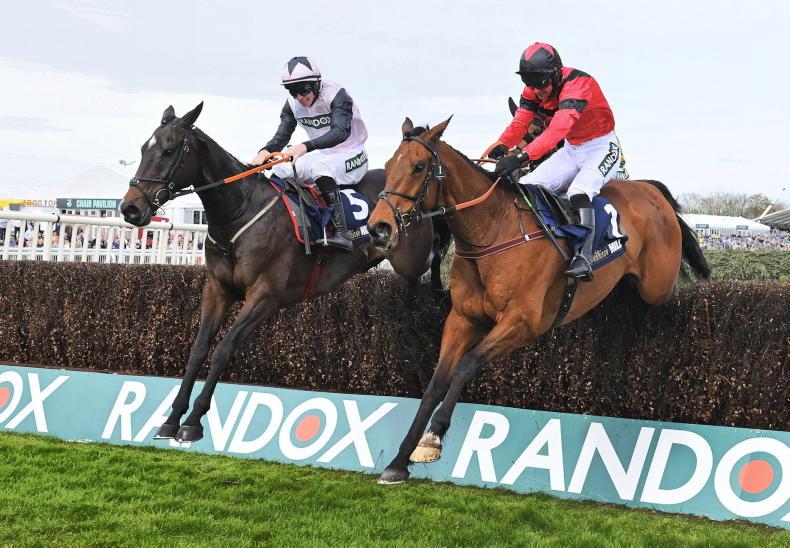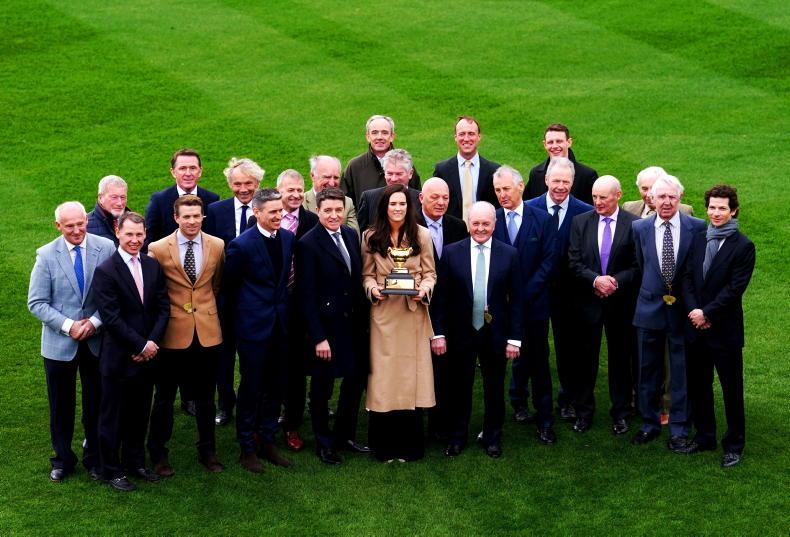A LOOK at various Cheltenham Festival records earlier this week revealed one interesting statistic concerning the Boodles Cheltenham Gold Cup.
After the victories of Al Boum Photo in 2019 and 2020 and that of Minella Indo last year, the stage is now set for fourth consecutive winner of the great race to hail from these shores. The betting currently sees Irish horses occupying six of the first seven spots at the head of the market so it would be considered a mild surprise if one member of the raiding party failed to carry the day. A look back at the history of the Gold Cup, which was first run in 1924, revealed that never before have Irish-trained horses won the race four years in succession so if a horse from these shores does happen to lift that prize on March 18th it will be unique in Irish racing history.
Over the course of time there have been relatively fallow periods for Irish horses in the Gold Cup. The Frank Morgan-trained Ballinode prevailed in the second running of the race in 1925 but it wasn’t until the victory of Tom Dreaper’s Prince Regent in 1946 that the prize came back across the Irish Sea.
Since then the longest losing run for Irish horses spanned the period from Dawn Run’s epic victory in 1986 to that of Imperial Call in 1996. In the intervening period, National Hunt racing in the this country was in the doldrums as evidenced by the fact that no Irish horse managed a top-three placing in the Gold Cup between Dawn Run and Imperial Call.
The success of the latter is perhaps the embodiment of Cheltenham as he lined up as the great white hope of Irish racing following a dominant success in what was then the Hennessy Gold Cup at Leopardstown. Lying in wait was the seemingly invincible Gordon Richards inmate One Man (11/8) before finishing a well-beaten sixth as the Conor O’Dwyer-ridden and Fergie Sutherland-trained Imperial Call defeated that year’s Grand National winner Rough Quest. Times change and the David and Goliath narrative that accompanied that Gold Cup build up no longer applies with Irish trainers having become so dominant.
Cheltenham needs those sort of clashes though, so it would be no bad thing if the forthcoming Festival did unearth a few stellar talents on the other side of the Irish Sea because healthy competition is a good thing.
On a different note, the 1996 Cheltenham Festival was an unexpectedly outstanding one for Irish-trained horses. A haul of seven winners from the 20-race meeting was regarded as a tremendous feat and Edward O’Grady led the way with two winners. Over those three days there were 30 Irish trainers represented and they supplied a total of 66 runners.
It is interesting to compare that with events of 2021 when the Irish challenge had taken on a completely different look. There were 23 Irish trainers represented at last year’s meeting and they supplied 162 of the runners over the four days.
However, it was interesting to look back at the make up of races in 1996 compared to 2020 which might offer a more optimum means of comparison than 2021 as it took place just before the Covid-19 pandemic.
The most striking aspect of then and now is how the novice races at the meeting have changed. In 1996, the Supreme, the Ballymore and the Triumph attracted field sizes of 27, 24 and 29 runners as against 15, 12 and 13 runners in 2020.
Otherwise there weren’t any major discrepancies over the course of the last 25 years although there was definitely a major upswing in handicap chase participation with the Ultima, the Festival Plate and the Grand Annual attracting much bigger fields now than then.
Thus Cheltenham has undergone huge change over the last quarter of a century but some things at its core. As regards the four days in Prestbury Park, the nature and character of the Irish challenge has changed dramatically and success there is anticipated as opposed to the fervent hope of the early 1990s that the raiding party might muster a winner or two.
Times change and fortunes rise and fall but Cheltenham still possesses an allure and prestige that trumps all.


 This is a subscriber-only article
This is a subscriber-only article
 It looks like you're browsing in private mode
It looks like you're browsing in private mode









SHARING OPTIONS: